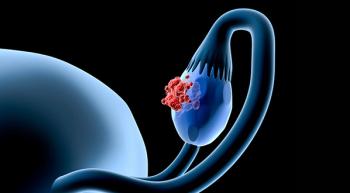
Virtual Reality as a Distraction Tool
Researchers conducted a study to determine if virtual reality is effective in reducing anxiety and pain prior to and during a bone marrow aspiration and biopsy.
Patients undergoing a bone marrow aspiration and biopsy often experience anxiety prior to this invasive procedure and discomfort during. Nurse researcher Catherine Glennon, RN, MHS, OCN, NE-BC, from the University of Kansas Cancer Center in Kansas City, led a group of colleagues in conducting a study to determine if virtual reality is effective in reducing anxiety and pain prior to and during a bone marrow aspiration and biopsy.
Because virtual reality is a nonpharmacologic measure that has shown success as a distraction tool for other painful procedures, the researchers hypothesized that wearing virtual reality goggles that provide visual and auditory stimuli would distract patients and reduce anxiety and pain levels prior to and during the procedure. The virtual reality goggles fit tightly on the face and block out negative stimuli, such as the sights and sounds associated with setting up equipment.
Participants in this study included 49 patients in the virtual reality experimental group and 48 in the usual care group. Participants were assigned to the experimental group or the control group on an “every-other-one” basis, with even-numbered participants assigned to the virtual reality goggle treatment group and odd-numbered participants assigned to the usual care group. During the bone marrow aspiration and biopsy procedure, the experimental group was given virtual reality goggles prior to the procedure¾where they were offered a choice of 3 nature scenes accompanied by relaxing music¾and the control group received standard care, which included watching and listening to a television. Detailed statistical analysis was published in
No statistically significant or clinically meaningful differences were noted between the groups in relation to pain or anxiety outcomes. More than half (51%) of the study participants reported some amount of anxiety reduction after the bone marrow aspiration and biopsy procedure, 28% reported an increase in anxiety, and 21% had no change in anxiety level. No significant differences were observed between the groups related to the expected and actual amounts of pain reported. The average number of anti-anxiety and pain medications required by each group did not differ significantly. Twenty participants received anti-anxiety and pain medications during the bone marrow aspiration and biopsy procedure, including 12 participants in the control group and 8 in the experimental group.
The major finding was that participants who wore virtual reality goggles during the bone marrow aspiration and biopsy procedure did not experience a statistically significant decrease in pain and anxiety—a finding that is inconsistent with the study’s hypotheses. Participants in both the experimental and control groups reported a decrease in pain and anxiety levels from pre- to post-procedure. It is possible that the participants were relieved to have the procedure over with and consequently reported reduced pain and anxiety compared to pre-procedure levels. Also, since the control group listened and watched television, it is possible that television served as a distraction from the pain and anxiety associated with the procedures.
This study provides more information on the applicability of virtual reality to distract patients prior to and during bone marrow aspiration and biopsy. Virtual reality is a non-invasive and non-pharmacologic intervention that may have utility in distracting patients from other unpleasant procedures. It also is easy and fairly inexpensive to implement, and one set of goggles can be sanitized and used on multiple patients.
Newsletter
Knowledge is power. Don’t miss the most recent breakthroughs in cancer care.
























































































